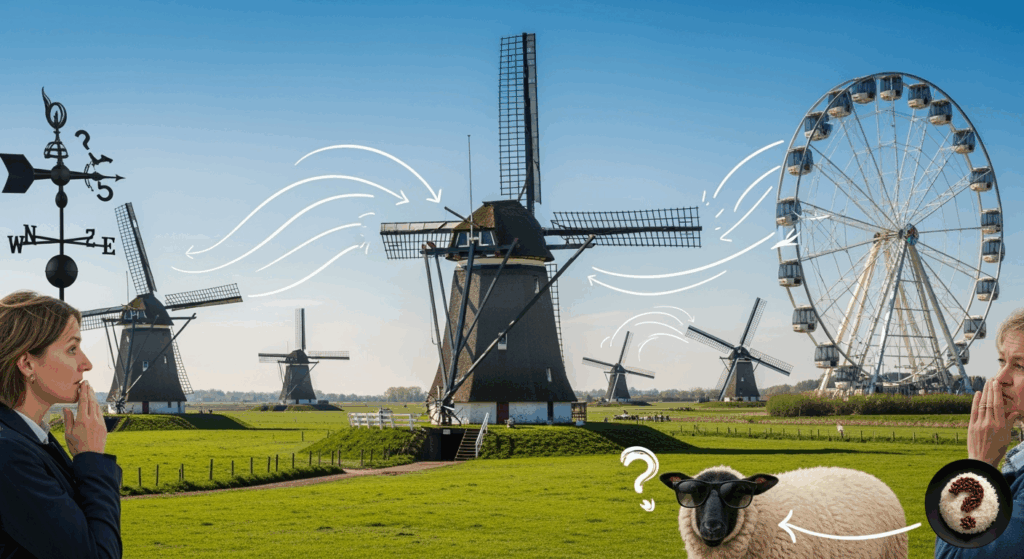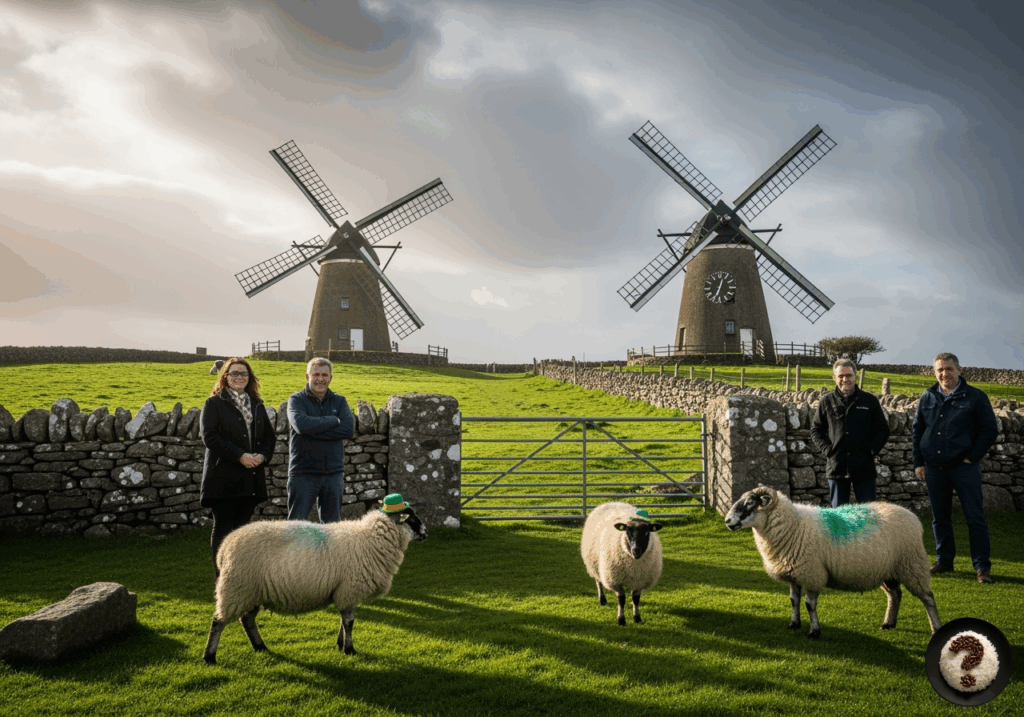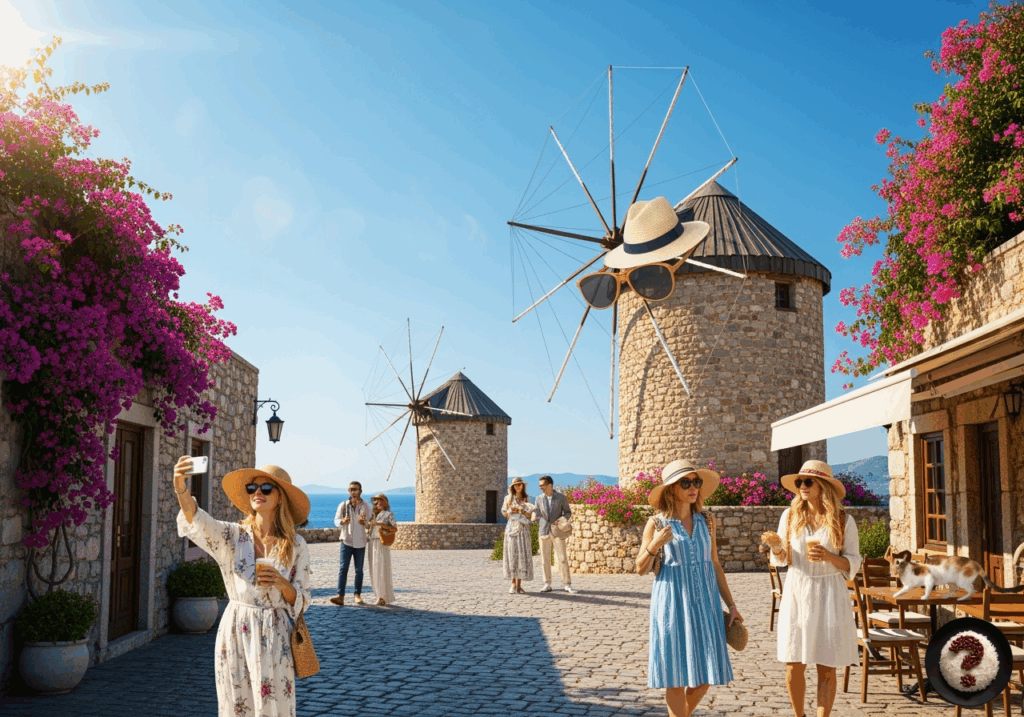
Why Do Windmills Always Turn the Wrong Way? The Wind’s Peculiar Tic and a Bit of Ferris Wheel
Windmills… Some of us imagine Holland when we see them; others recall Don Quixote mistaking them for giants. But let’s focus on the most fundamental question: Why do these windmills always turn counter-clockwise? Does the wind blow from the right, but the propeller stubbornly turns left? If so, why? Is there a secret contract between the windmill and the wind?
First, let’s admit this: Windmills are the most elegant structures, declaring “I am at peace with the wind” against nature since the Middle Ages, not just this century. They open their sails to harness energy, spin gently, grind flour, pump water, and some even make a flute-like sound as the wind passes through them. They are, in short, hardworking and nature-friendly structures.
But those spinning sails… Can you picture them? If you pay attention (or will pay attention from now on), nearly all windmills turn counter-clockwise. Yes, as if defying the eye of time!
So, is this a coincidence or random? Absolutely not. Because engineering and history tell us this: The counter-clockwise rotation of windmills is entirely related to their structural design and ease of use. Since the Middle Ages, many mills have been managed by right-handed people who are accustomed to using their hands naturally. Therefore, the mechanism was designed accordingly. Combined with the direction of the wind, this rotation mechanism works more efficiently this way.

But hold on! There’s a surprise in this. Because there are also windmills that turn clockwise. Where? In Ireland! Now you might say, “Of course, the Irish just have to be different!” True. They charted their own course in this regard. Perhaps they meant to say, “We can even turn the wind the other way!”
Let’s take a “reality break,” like a coffee break, right here: This direction of rotation actually caused quite serious debates in its time. Some argued that “a counter-clockwise turning mill brings abundance,” while others claimed, “No, man, that direction is ominous.” Which one is true? Unknown. But one thing is certain: The taste of your breakfast flour doesn’t change based on the direction the mill turns.
There’s also a literary dimension to this. We finally understand why Don Quixote attacked the windmills: Perhaps he found their counter-clockwise rotation “contrary to reality.” Maybe everything in his fantasy world revolved clockwise. In short, the poor man was delusional, but he had principles…

Thinking culturally, almost everyone has seen a windmill. Especially those planning to retire and settle in the Aegean region have dreamed of, “We’ll put a little windmill in the garden, too.” Will that mill turn? No. But the direction matters, because even if it’s decorative, it must turn counter-clockwise, or the aesthetic spell is broken!
Windmills read not just physics but psychology as well. Think about it: During the ups and downs of your life, you look up and see a sail turning against the wind. It says to you: “Even I am turning the other way and getting work done; you just smile and see how beautiful the world becomes.” It’s truly a therapeutic device.
In conclusion, the direction of rotation of windmills is actually shaped by industrial engineers, the direction of the wind, ease of use, and a bit of tradition. Much like how we can’t decide what time to have breakfast… These beautiful structures that turn the “wrong” way tell us that sometimes, success lies in going against the ordinary.
Remember, turning is not the issue; how and why you turn writes the real story! 🌬️🌾
